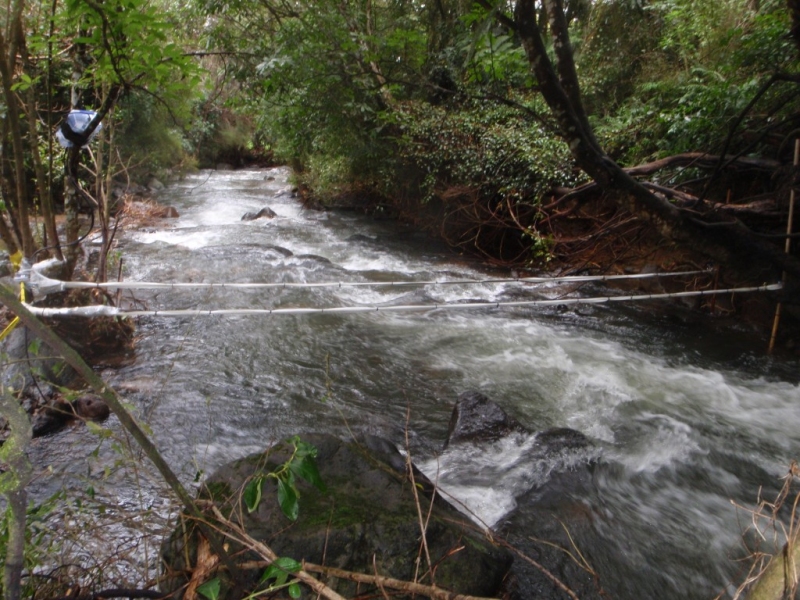Passive Integrated Transponders (PIT) are used to tag fish (or any animal) for life.
PIT tags can be advantageous over active transmitters (e.g. radio and acoustic telemetry) as they don’t require a battery so they are smaller in size, cost effective and have an unlimited lifespan. As they are a passive tag, an electromagnetic field is required for the tag to transmit its signal, and therefore the tagged animal must pass through or close by an antenna. Continued improvements in PIT antenna design, and particularly development of automated systems, has enabled PIT tags to monitor the movement patterns of fish across broader scales, and with increased efficacy.
There are two modes of transmission; full-duplex (FDX) and half-duplex (HDX). A FDX system receives and transmits data simultaneously whereas a HDX system separates data transmission and reception. HDX systems are therefore simpler, more affordable and can also be utilised with larger antenna. NIWA specialise in the development of HDX PIT systems for monitoring fish movements.
As PIT tag are small (8-12mm) they can be implanted into smaller bodied fish species and a wider range of life stages. Once a fish is PIT tagged, it can identified either as it passes through an antennae loop or by wiping a hand held or back pack reader over the animal. Records can be logged in real time and/or transmitted to a base station automatically.
PIT tagging is mostly used by NIWA to monitor short range movements of fish within streams to identify critical life stage habitats necessary for different species to feed, grow and reproduce. However, this passive technology has been successfully used to track migratory adult lamprey (piharau/kanakana) over 8 km to pinpoint their spawning habitats, which was the first discovery of a Southern Hemisphere lamprey spawning site. Projects to date have focused on tracking native fish species including eels (tuna), lamprey (piharau/kanakana), banded kokopu and giant kokopu.
Further reading:
Baker, C.F., Reeve, K. Baars, D.K., Jellyman, D., Franklin, P. (2017). Efficacy of 12 mm half-duplex PIT tags in monitoring fish movements through stationary antenna systems. North American Journal of Fisheries Management 37(6):1289-1298 http://dx.doi.org/10.1080/02755947.2017.1376011



